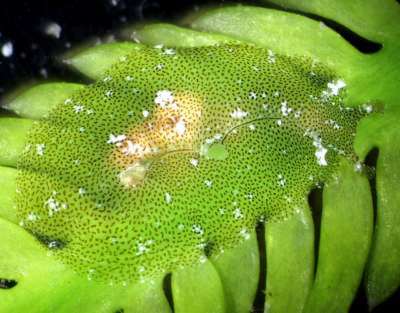
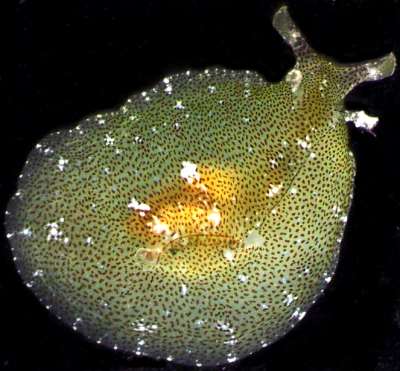
Petalifera petalifera
(Rang, 1828)
Order: ANASPIDEA
Superfamily: APLYSIOIDEA
Family: Aplysiidae
DISTRIBUTION
Mediterranean and eastern Atlantic. Possibly more widely spread but a better understanding of the genus worldwide is required before we can determine whether this species has a wider distribution.
PHOTO
Locality: middle Adriatic, Croatia. Depth: unrecorded. Length: approx. 20 mm. Caulerpa taxifolia settlement. Photographer: A. Zuljevic
A very flattened Sea Hare, in which the parapodia are reduced and fused, except for a small postero-dorsal opening into the mantle cavity, which is covered by a pair of small rounded flaps. The body is translucent with a close scattering of green to brown specks, which appear to be embedded in the skin. The translucent body enables this species to be well-camouflaged on the sea grass leaves and algae on which it lives, the colour of the plant showing through the body of the slug. It grows to about 40mm in length.
The original description of Petalifera petalifera is not easy to interpret, but most authors have accepted it to apply to a reasonably common, small translucent sea hare covered in an irregular pattern of brown to green patches and diffuse spots. It has been reviewed and illustrated by Fasulo et al (1984) and Terreni (1997) and its anatomy and nomenclatural history redescribed by Martinez (1996).Petalifera petalifera has been confused in the literature with Phyllaplysia lafonti [see message #13719]. Terreni (1997) compares and illustrates both species from the Mediterranean. A photo (Ocana, 2000) identified as P. petalifera, from the Straits of Gibraltar, is P. lafonti. I have also moved the following messages, previously identified as P. petalifera, to P. lafonti [#9017, #5433].
-
Fasulo, G., Izzillo, F., Russo, G. F., Toscano, F., and Villani, G. (1984) Nota su Petalifera petalifera (Rang, 1828) (Gastropoda, Opisthobranchia, Aplysiomorpha), specie Mediterranea poco conosciuta. Considerazioni sistematiche, ecologiche e biogeografiche. Bollettino Malacologico, 20: 263-272.
-
Fischer, P (1870) Observations sur les Aplysies. Ann. de Sci. Nat (5). Zool & Pal, 13: 3
-
Fischer, P (1872) Description d'une espece nouvelle du genre Phyllaplysia. Journal de Conchyliologie, 20: 295-301.
-
Martinez, E. (1996) On Petalifera petalifera (Rang, 1928) (Gastropoda: Opisthobranchia): new anatomical and geographical data. Journal of Molluscan Studies, 62: 243-250.
-
Ortea, J.A. & Martínez, E. (1991) El Orden Anaspidea (Mollusca: Opisthobranchia) en las Islas Canarias. Rev. Acad. Canar. Cienc., 3(4): 87-107.
-
Rang, S. (1828) Histoire naturelle des Aplysiens, premiere famille de l'ordre des Tectibranches. In: Histoire naturelle Generale et particuliere des Mollusques. Firmin Didot, Paris, 84pp. Pls. 1-24.
-
Terreni, G. (1997) Rinvenimento di un esemplare di Phyllaplysia lafonti (P. Fischer, 1870) nelle acque litorali di Livorno (Gastropoda, Opisthobranchia, Aplysiomorpha). La Conchiglia, Roma, 29 (282): 45-47.
Rudman, W.B., 2005 (May 12) Petalifera petalifera (Rang, 1828) . [In] Sea Slug Forum. Australian Museum, Sydney. Available from http://www.seaslugforum.net/find/petapeta
Related messages
Small Sea Hares from the Canary Islands
April 24, 2008
From: Alejandro Escanez Perez
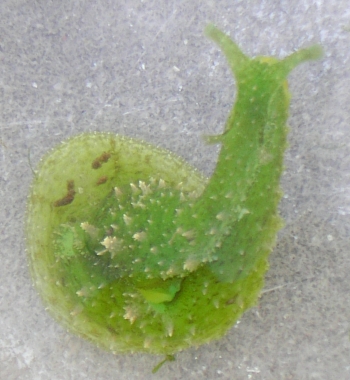
Could you please indicate me the species or genus to whom it belong? Sea Hare? Oxynoe? I believe it is not a common species in the Canary Island. thanks.
Locality: Sea side Tenerife Island, Santa Cruz de Tenerife, 1 metres, Canary Islands, Spain, Atlantic, 07 September 2007, Specimen found by the sea side. Depth 1m on green algae ( Enteromorpha and other green algae). Length: 7 centimetres. Photographer: Alejandro Escanez Perez.
Alejandro Escanez Perez
aescanez@msn.com
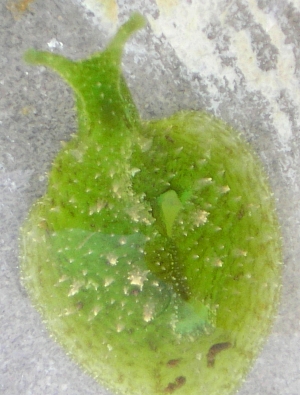
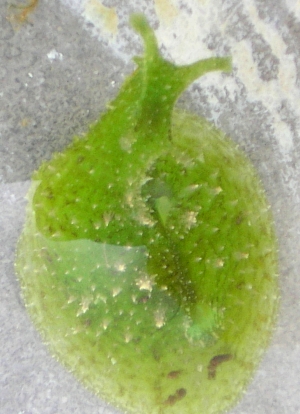
Dear Alejandro,
This is a small Sea Hare. I suspect it is Petalifera petalifera but I am afraid that that species, and others in that and related genera, have been very confused in the scientific literature. Ortea & Martínez (1991) have reviewed this group in the Canary Islands, but I don't think they have correctly identified all their species.
I really can't say much more at this stage. Have a look at the Fact Sheets and messages on other species of Petalifera, Phyllaplysia and Dolabrifera to get an idea of the extent of the problem.
-
Ortea, J.A. & Martínez, E. (1991) El Orden Anaspidea (Mollusca: Opisthobranchia) en las Islas Canarias. Rev. Acad. Canar. Cienc.,. 3(4): 87-107.
Best wishes,
Bill Rudman
Petalifera petalifera from Tunisia
August 23, 2006
From: Jeanne Zaouali
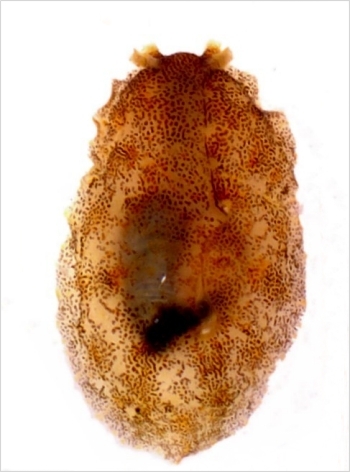
Dear Bill
Is it possible to identify this animal from the photograph?
Locality: Hergla (north of Sousse) Tunisian sahel, 9 meters, Tunisia, Mediterranean sea, 17 August 2006, Posidonia beds. Length: 12 mm. Photographer: Jeanne Zaouali.
Avec mes amitiés
Merci d'avance
Jeanne
jeanne.zaouali@planet.tn
Zaouali, J., 2006 (Aug 23) Petalifera petalifera from Tunisia. [Message in] Sea Slug Forum. Australian Museum, Sydney. Available from http://www.seaslugforum.net/find/17534Dear Jeanne,
This is a Sea Hare, and from its shape, size and colour and am pretty sure it is Petalifera petalifera. Like many of these small sea hares, they are probably much more common that collecting records suggest. I think they are often overlooked because of their cryptic colouration and flattened body.
Best wishes,
Bill Rudman
Petalifera petalifera from Croatia
May 12, 2005
From: Andrej Jaklin


Dear Bill,
Help me out on this, I got pictures from colleague of mine. Is this Phyllaplysia lafonti or Petalifera petalifera? Both species are mentioned as found in the Adriatic Sea but have never seen neither one nor the other alive.
Locality: middle Adriatic, Croatia. Depth: unrecorded. Length: approx. 20 mm. Caulerpa taxifolia settlement. Photographer: A. Zuljevic
Thank you,
AJ
jaklin@cim.irb.hr
Jaklin, A., 2005 (May 12) Petalifera petalifera from Croatia. [Message in] Sea Slug Forum. Australian Museum, Sydney. Available from http://www.seaslugforum.net/find/13708Dear Andrej,
Thanks for sharing this problem, as in trying to resolve it for you, I think I solved a puzzle I have been avoiding for some time. You and I are not the first people to be puzzled by just what these two species are. In an earlier message [#8652] I show P. lafonti has been mistaken for Syphonota geographica. In my comments on that I posted a copy of the original illustration of Phyllaplysia lafonti, but in a later [message #9017] I followed Ocana, (2000) in identifying a species as Petalifera petalifera, which actually fitted the original description of P. lafonti very well, .
As I discuss separately, [message #13719 ] your animal is the real Petalifera petalifera. We already have some good photos of it from Turkey [message #11241 ].
Best wishes,
Bill Rudman
Petalifera petalifera from Turkey
October 16, 2003
From: Baki Yokeş
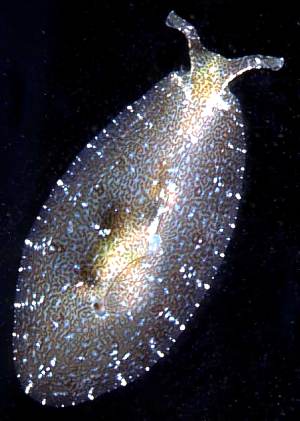
Dear Bill,
I have a species that I have kept it in my aquarium for 4 months. It arrived with some Caulerpa fronds which I had collected from Antalya [Turkey]. It looks like Dolabrifera dolabrifera. In the beginning it was colourless, but as it grazed on the walls of the aquarium it got browner. What is your suggestion? If my ID is correct do you know any records of Dolabrifera dolabrifera from the Mediterranean? A new lessepsian migrant perhaps??
Thank you in advance
Best wishes
Baki
bakiyokes@turk.net
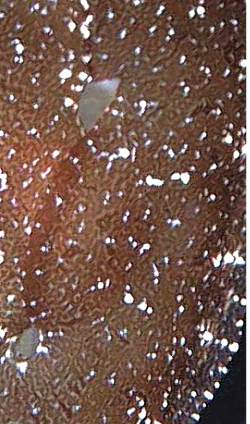
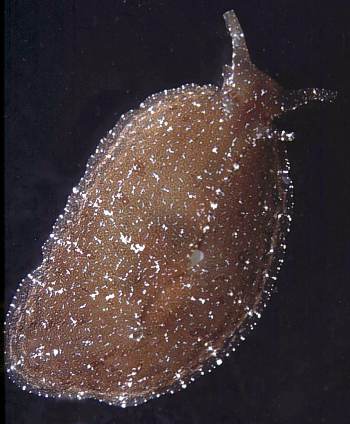
Dear Baki,
I am pretty sure this is a colour form of Petalifera petalifera. The problem with many of these aplysiids is that they have been studied on the whole as preserved museum specimens with little note being taken of the living animals. We are still very much in the infancy of studying them as living animals. As you have seen in your aquarium, it seems some species are capable of changing their colour either with age or in response to the colour of the algae they are feeding on. In fact Ortea & Martínez (1991) report this for P. petalifera rom the Canary Ids. This species, if it is indeed one species has a wide distribution around the world.
In the close-up photo at the bottom left, you can see how the parapodia are reduced to a pair of small rounded flaps to form a cover over the reduced shell and mantle cavity
• Ortea, J.A. & Martínez, E. (1991) El Orden Anaspidea (Mollusca: Opisthobranchia) en las Islas Canarias. Rev. Acad. Canar. Cienc.,. 3(4): 87-107.
Best wishes
Bill Rudman
